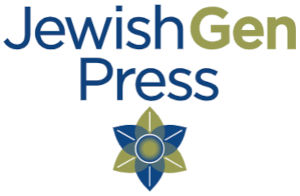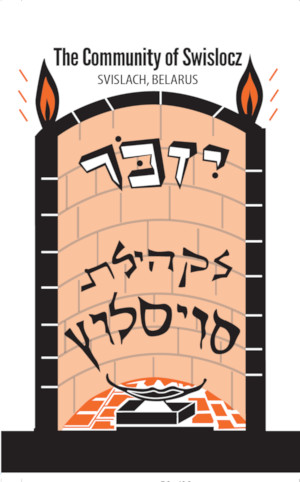

Translation of
Published by the JewishGen Press
Editor of Original Yizkor Book: H. Rabin
Available from
for $31.00
Project Coordinator: William K. Rosenbloom z”l
Editing of the translated material: Toby Bird z”l
Cover Design: Irv Osterer
Layout and Name Indexing: Jonathan Wind
Photo Extraction: Sondra Ettlinger
Book Summary: Bruce Drake
7”x10” 182 pages, Hardcover with original photographs
 |
Details:
Svislach is a village in western Belarus near the Polish border. It lies just east of Bialystok and about 155 miles southwest of Minsk. The Jewish community started to grow in the 18th century when it became the property of the Tyskowicz counts who made great efforts to enlarge and beautify the town and conducted fairs that brought in merchants from afar. Many became permanent residents. Jews numbered 997 in 1847 a population that doubled to 2,086 in 1897.
During the early years of the community, the majority of Jews worked in the lumber and grain trades and were shopkeepers and craftsmen. But a great fire in 1830 leveled most of the stores, the fairs stopped being held and because of their involvement in the 1831 Polish uprising against Russia, the Tyskowicz counts fled abroad leaving no one to rebuild.
The book provides accounts of the spiritual leaders and institutions in the town: its rabbis, its schools and teachers, and the political movements there such as the Zionists and their political competitors in the Bund which set out to actively organize the tannery workers. In the early 1900s it organized strikes aimed at improving working conditions in the tanneries and the factories.
In 1939, around 3,000 Jews lived in Svislach, along with refugees from western Poland who had settled there after the invasion of Poland. The book recounts the arrival of the Germans and includes a chilling chapter -- “The Torture that the Svislach Natives endured in the Volkovisk Ghetto” – about the suffering of the Jews in that nearby town until the ghetto was liquidated in 1942. Many were murdered or sent to work camps. The remaining Jews, mostly elderly and sick, were murdered in the Visnik Forest, just outside Svislach. This was the end of Jewish Svislach.
May this book serve as a memorial to those who lived, worked, studied and dreamed of better life in Svislach.
Svislach [Bel], Svisloch' [Rus], Świsłocz [Pol], Sislevitsh [Yid], Svisločius [Lith], Śvisłač, Sislevitch, Sislevits, Svislovitch, Svislovitz, Svislotch, Svislots
Svislach, Belarus is located at 53°02' N 24°06' E 155 miles WSW of Minsk.
|
 JewishGen Press
JewishGen Press
 JewishGen Home Page
JewishGen Home Page
Copyright © 1999-2025 by JewishGen, Inc.
Updated 23 Aug 2024 by LA